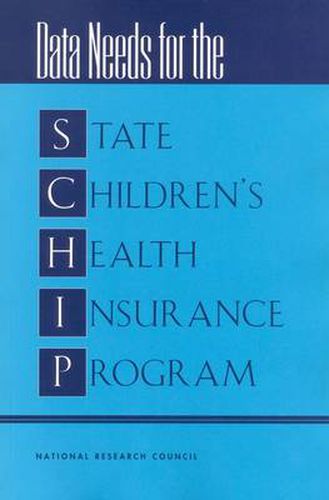Readings Newsletter
Become a Readings Member to make your shopping experience even easier.
Sign in or sign up for free!
You’re not far away from qualifying for FREE standard shipping within Australia
You’ve qualified for FREE standard shipping within Australia
The cart is loading…






The State Children’s Health Insurance Program (SCHIP) was established by Congress to provide health insurance to uninsured children whose family income was too high for Medicaid coverage but too low to allow the family to obtain private health insurance coverage. The enabling legislation for SCHIP, included in the Balanced Budget Act of 1997, made available to states (and the District of Columbia) almost $40 billion over a 10-year period for this program. Like Medicaid, SCHIP is a joint federal-state program, with funding from both sources, but it is implemented by the states. Thus, there are SCHIP programs in all of the states and the District of Columbia. The National Research Council, through the Committee on National Statistics, was asked to explore some of the ways in which data analysis could be used to promote achievement of the SCHIP goal of expanding health insurance coverage for uninsured children from low-income families. To inform its work, the panel for this project held a workshop to bring together state SCHIP officials and researchers to share findings and methods that would inform the design, implementation, and evaluation of SCHIP at the state and national levels. In keeping with this charge, this report is limited to discussions at the workshop. It does not attempt to provide a summary of all the state programs nor a comprehensive review of the literature. Data Needs for the State Children’s Health Insurance Program concludes that data are insufficient in the individual states to provide a clear picture of the impact of SCHIP on the number of children who are eligible for the program, the rate at which eligible children are enrolled in the program, and the rate at which they are retained in the program once enrolled. This situation is due, in part, to the fact that sample sizes in national surveys are too small to provide detailed data for individual states. In addition, the great amount of movement of children among health insurance categories-Medicaid, SCHIP, private insurance, or no insurance at all-makes it difficult for states to count the number of children in specific categories at a particular point in time. The panel specifies a number of practices that could be implemented to improve the overall functioning of SCHIP and the ability of policy makers to evaluate the program. Foremost among these are: (1) developing more uniform ways of estimating eligibility and health insurance coverage among the states; (2) sharing among the states effective methods for outreach; (3) taking qualitative information into account, in addition to quantitative information, in assessing variation among states in enrollment and disenrollment; and (4) implementing longitudinal studies to track the movement of children among the various insurance statuses.
$9.00 standard shipping within Australia
FREE standard shipping within Australia for orders over $100.00
Express & International shipping calculated at checkout
The State Children’s Health Insurance Program (SCHIP) was established by Congress to provide health insurance to uninsured children whose family income was too high for Medicaid coverage but too low to allow the family to obtain private health insurance coverage. The enabling legislation for SCHIP, included in the Balanced Budget Act of 1997, made available to states (and the District of Columbia) almost $40 billion over a 10-year period for this program. Like Medicaid, SCHIP is a joint federal-state program, with funding from both sources, but it is implemented by the states. Thus, there are SCHIP programs in all of the states and the District of Columbia. The National Research Council, through the Committee on National Statistics, was asked to explore some of the ways in which data analysis could be used to promote achievement of the SCHIP goal of expanding health insurance coverage for uninsured children from low-income families. To inform its work, the panel for this project held a workshop to bring together state SCHIP officials and researchers to share findings and methods that would inform the design, implementation, and evaluation of SCHIP at the state and national levels. In keeping with this charge, this report is limited to discussions at the workshop. It does not attempt to provide a summary of all the state programs nor a comprehensive review of the literature. Data Needs for the State Children’s Health Insurance Program concludes that data are insufficient in the individual states to provide a clear picture of the impact of SCHIP on the number of children who are eligible for the program, the rate at which eligible children are enrolled in the program, and the rate at which they are retained in the program once enrolled. This situation is due, in part, to the fact that sample sizes in national surveys are too small to provide detailed data for individual states. In addition, the great amount of movement of children among health insurance categories-Medicaid, SCHIP, private insurance, or no insurance at all-makes it difficult for states to count the number of children in specific categories at a particular point in time. The panel specifies a number of practices that could be implemented to improve the overall functioning of SCHIP and the ability of policy makers to evaluate the program. Foremost among these are: (1) developing more uniform ways of estimating eligibility and health insurance coverage among the states; (2) sharing among the states effective methods for outreach; (3) taking qualitative information into account, in addition to quantitative information, in assessing variation among states in enrollment and disenrollment; and (4) implementing longitudinal studies to track the movement of children among the various insurance statuses.